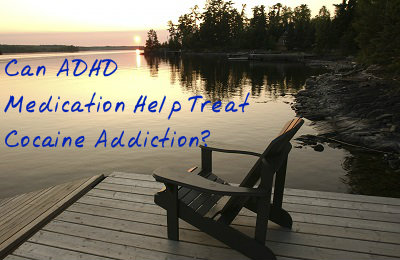18 Sep 2013
Prescription Drug Abuse In Women Skyrockets
Deaths among women from prescription pain medications are on a steep incline, according to a recent study by the Centers for Disease Control and Prevention (CDC). The study reported that deaths among women due to prescription painkiller abuse grew five-fold from 1999 to 2000. During the same time period, deaths from prescription painkiller overdoses among men grew by 3 ½ times its previous rate. This report highlights the longstanding problem of widespread abuse of prescription pain drugs among women—a problem that has often been overlooked or minimized.
Drug abuse in general, including abuse of prescription painkillers, is often viewed as a bigger problem for men than for women. While it is true that men do make up a larger percentage of all drug abusers, prescription painkiller abuse has affected women in larger numbers for more than a century. And while there are still more yearly deaths among men from prescription drugs—including prescription painkillers—the rapid spike in deaths among women in recent years means that the gender gap is quickly closing.
Painkiller Abuse In The 19th Century
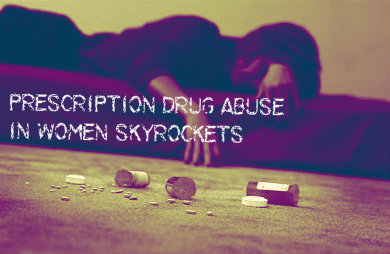 Epidemiological reports from the 19th century estimate that women made up 65 percent to 75 percent of all individuals addicted to opium. This was often the result of self-medication, the use of unregulated “patent” medicines, or irresponsible and inappropriate prescriptions on the part of qualified physicians. In this century, women were often unnecessarily medicated even by qualified professionals due to the prevailing belief of the time that women were fragile and unable to cope with physical pain or emotional distress without assistance. Women were often treated for a vague complaint known as neurasthenia—characterized primarily by fatigue, headaches and irritability—as well as other “disorders” whose existence have now been largely discredited.
Epidemiological reports from the 19th century estimate that women made up 65 percent to 75 percent of all individuals addicted to opium. This was often the result of self-medication, the use of unregulated “patent” medicines, or irresponsible and inappropriate prescriptions on the part of qualified physicians. In this century, women were often unnecessarily medicated even by qualified professionals due to the prevailing belief of the time that women were fragile and unable to cope with physical pain or emotional distress without assistance. Women were often treated for a vague complaint known as neurasthenia—characterized primarily by fatigue, headaches and irritability—as well as other “disorders” whose existence have now been largely discredited.
Modern Drug Use Among Women
As early as the 1960s, studies have shown that women make up the majority of prescription drug users in the United States. This includes painkillers, psychoactive medications and antidepressants.
There are a variety of possible reasons for this gender imbalance. For example, modern studies have provided evidence that women experience more chronic pain than men do, or at least seek treatment for chronic pain more frequently. Women who use prescription medications report many other factors that contributed to their decision to seek treatment for physical or mental distress. These factors often include gender discrimination in work or social settings, the economic and emotional challenges of being the primary caregiver or a single parent, and societal expectations.
Studies have show that when women are prescribed pain medication, they are more likely to be given higher doses and medicated for a longer period of time than their male counterparts. One possible explanation for this phenomenon is that men remain more likely to have jobs involving manual labor with high risk of short-term injuries. In contrast, women are more likely to experience chronic pain when reaching middle age and seek treatment over a long period of time.
With a large and rapidly growing number of women taking prescription painkillers, the odds increase that a certain number of these women will develop physical dependencies. Many prescription pain medications, including Vicodin and morphine, are opioid drugs that are highly addictive.
Equal Opportunity Drug Abuse
Since as early as the 1920s, the overwhelming majority of drug users among men have been from minority populations and economically disadvantaged backgrounds. In contrast, prescription drug abuse among women has always affected a much more varied population, from the wealthy to the working classes. Although white and Native American populations have the highest numbers of deaths from prescription painkillers, the problem is by no means unique to those demographic groups.
While women who abuse prescription painkillers do not come from one predominant economic situation or ethnicity, there is a strong trend apparent when it comes to age. The rate of deaths from prescription painkillers more than tripled among women ages 45 through 54, and also tripled for women ages 55 through 64. In the year 2010, middle-aged women in these age groups made up almost half of the overall deaths among women from drug overdoses.
Cocaine is an illegal stimulant drug known for its ability to produce physical dependence by triggering long-term alterations in the brain’s normal chemical environment. The common ADHD medication methylphenidate (Ritalin, Methylin, Concerta) bears a strong chemical resemblance to cocaine, but produces less extreme changes in brain chemistry. In a study published in August 2013 in the journal JAMA Psychiatry, a multi-institution research team examined the potential effectiveness of methylphenidate as a treatment for cocaine addiction. The members of this team concluded that the medication apparently reverses some of the critical changes in normal brain function produced by cocaine.
Cocaine Addiction Basics
Cocaine use can lead to physical dependence (i.e., addiction) because the drug sharply boosts the brain’s levels of a specific chemical responsible for producing pleasurable sensations. An individual who experiences this cocaine-related spike in pleasure levels typically heads toward physical dependence when he or she seeks to re-experience the drug’s stimulant “high” again and again over time. In mental health terms, cocaine addiction belongs to a larger illness classification called stimulant use disorder (which in turn belongs to an even larger category of conditions called substance use disorders). This classification includes all forms of addiction stemming from the use of stimulant drugs or medications. It also includes all forms of non-addicted abuse of stimulant drugs and medications. Since issues of abuse and addiction are commonly intertwined, the stimulant use disorder diagnosis replaces all separate diagnoses of stimulant abuse and stimulant addiction.
Methylphenidate Basics
Like cocaine, Ritalin and all other forms of methylphenidate boost the brain’s levels of the chemical responsible for producing pleasure. Methylphenidate has this effect because it has a chemical structure that’s extremely close to the structure of cocaine. However, while cocaine triggers sharp, relatively extreme spikes in the amount of the brain’s pleasure-producing chemical, methylphenidate triggers a smoother, significantly less extreme increase in the amount of this chemical. If it’s taken in a manner not prescribed by a doctor, methylphenidate can easily play a role in abuse/addiction problems, just like cocaine or other stimulants such as amphetamine or methamphetamine. However, when used properly under a doctor’s supervision, it typically presents no unusual abuse or addiction risks.
New Findings
In the study published in JAMA Psychiatry, researchers from Stony Brook University and the National Institute on Alcohol Abuse and Alcoholism assessed the potential usefulness of methylphenidate in easing the effects of cocaine addiction. They decided to use methylphenidate specifically because of its structural resemblance to cocaine and its relatively weak ability to boost levels of the brain’s pleasure-producing chemical. In the same way that doctors can initially treat nicotine addiction with nicotine patches, the researchers wanted to know if it’s possible to initially treat cocaine addiction with methylphenidate. During the study, nine cocaine addicts received a single dose of methylphenidate on two separate occasions. After administering the methylphenidate, the researchers examined the participants’ brains with the help of modern, MRI-based imaging technology.
After reviewing the results of the participants’ brain scans, the researchers found that methylphenidate had two basic effects. First, when compared to a second group of cocaine addicts who did not receive methylphenidate, the addicts who did receive the medication experienced a significant reduction in activity in the part of the brain responsible for boosting pleasure levels. At the same time, these treated addicts also experienced an increase in activity in two other parts of the brain responsible for controlling emotions and regulating behavior. (These two brain areas are typically unusually low-functioning in people with cocaine addictions.) In follow-up interviews, the researchers asked the participants who received methylphenidate a series of questions designed to gauge any real-world changes in their levels of addiction. After completing these interviews, the study’s authors concluded that methylphenidate did indeed weaken the strength of the participants’ addiction-related thoughts and behaviors.
Considerations
The authors of the study in JAMA Psychiatry did not look at the possible effects of long-term methylphenidate treatment on cocaine addiction. However, from their short-term experiments, they concluded that methylphenidate can potentially make brain changes that are critical to disrupting cocaine addiction and giving users of the drug a chance to assert the personal control necessary to successfully take part in long-term cocaine recovery. Despite this potential, the authors note the preliminary nature of their findings and emphasize the need for further research on methylphenidate as a treatment for cocaine addiction or other forms of stimulant addiction. No one should use methylphenidate on his or her own as a cocaine addiction treatment. Such unprescribed and unmonitored use would constitute a form of drug abuse.
A study has concluded that for some having an eating disorder could also mean an increased risk for alcohol abuse. The reverse is also true, that certain people with alcohol dependency may face higher chances of developing certain kinds of eating disorders.
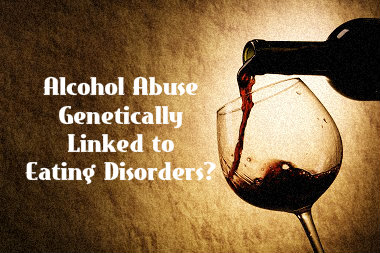 For their study, researchers at the Washington University Medical School in St. Louis took a look at close to 6,000 fraternal and identical twins over age 18. Mental health practitioners and other experts have been aware for some time of a comorbidity between alcohol abuse and eating disorders in women, but this new study indicates that the link holds true for some men as well. The research has tended to focus on women since they’re most often the victims of disordered eating, but men suffer these illnesses as well, including binge eating.
For their study, researchers at the Washington University Medical School in St. Louis took a look at close to 6,000 fraternal and identical twins over age 18. Mental health practitioners and other experts have been aware for some time of a comorbidity between alcohol abuse and eating disorders in women, but this new study indicates that the link holds true for some men as well. The research has tended to focus on women since they’re most often the victims of disordered eating, but men suffer these illnesses as well, including binge eating.
Binge Eating
Binge eating occurs when a person consumes an overabundance of food in a single sitting. This overeating is often done in secret and is followed by feelings of guilt, shame and being out of control. It’s frequently accompanied by purging wherein the person compensates for the large food intake by either causing themselves to vomit or misuse laxatives or diuretics. Experts refer to behaviors like purging as compensatory behaviors. The researchers did not ask men about purging behaviors such as diuretic and laxative abuse, but instead relied upon data from prior male studies. They did ask the women in the study about any potential purging behaviors. Compensatory behaviors like purging are considered closely connected to alcohol abuse behaviors.
Similarities
Following the interviews, statistical methods were employed to calculate estimates for both the influence of environment and the influence of genes. Both eating disorders and alcohol dependency are thought to be a result of a mix of environmental and genetic causes. The statistical method carefully separated the two in order to gauge genetic impact alone. What they found was that the same genes were implicated in both alcohol dependency and binge eating disorders.
Around six percent of the females in the study had problems with alcohol dependency at one time or another during their life. Thirteen percent of them also struggled with binge eating and 14 percent of them also engaged in purging behaviors. More men (25 percent) reported alcohol dependency at some point and 11 percent of them had also engaged in binge eating.
This means that there was a .26 overall statistical correlation between binge eating and alcohol dependency (zero equals no genes in common and one equals every gene in common). For women the correlation was .32. The study team concluded that some of the very same genes which affect alcohol dependency also impact binge eating for both men and women along with compensatory behaviors (purging) in women.
Treatment
There is increased awareness of eating disorders in today’s culture, but diagnoses of anorexia nervosa and bulimia nervosa (a binge and purge eating disorder) continue to be relatively infrequent. When men or women are diagnosed and admitted into treatment, there is rarely any examination into alcohol abuse issues as part of recovery therapy.
Likewise, when men or women enter into alcohol treatment, it is uncommon for staff to inquire or investigate any potential eating disorders. The Washington University study suggests that, given the genetic link between these two illnesses, recovery strategies should target both kinds of compensatory behavior.
The study is scheduled for publication in the September volume of the Journal of Studies on Alcohol and Drugs.
Prevention and early intervention are key elements in reducing the number of teens that use drugs. In order to identify and target teens for education and intervention, however, it is important to understand what factors make a teen likely to use.
There are differences, too, in various subgroups of the population that can influence which factors make drug use likely. Urban teens have different risk factors than rural teens, for instance, and black teens are likely to use drugs for different reasons than white teens.
Understanding Trends Are Critical
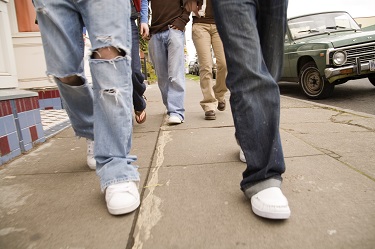 It is critical to understand the trends that affect teens and that might impact whether they initiate drug use. Often, those teens that experiment with drugs go on to develop a drug addiction by the time they reach early adulthood. The transition to early adulthood is characterized with decisions that can impact career choice and even marriage and family, so it is critical that drug use be reduced in this population.
It is critical to understand the trends that affect teens and that might impact whether they initiate drug use. Often, those teens that experiment with drugs go on to develop a drug addiction by the time they reach early adulthood. The transition to early adulthood is characterized with decisions that can impact career choice and even marriage and family, so it is critical that drug use be reduced in this population.
Among Hispanic teens, experts have observed that the process in which an immigrant teen has adapted to his or her host country’s culture, or acculturation, is a predictor of drug use. However, while studies have shown a correlation between acculturation and drug use, the nature of the connection is not fully understood. A new study has shown the pathways that connect acculturation with teen drug use among Hispanics.
The researchers enrolled 1,040 Hispanic students from high schools in California. The students were recruited through a substance use prevention effort being used in the school.
Linguistic Connection
The researchers administered questionnaires at the beginning of the study, and then again at a one-year follow-up period. Included in the questionnaires were measures of several different factors. The students were asked about their linguistic acculturation, with questions that sought to establish, for instance, the primary language used by the student.
The students were also asked about their social self-control, with questions such as whether a student encountered difficulties in controlling what they said. They also asked students which drugs their close friends had used during the past thirty days.
In addition, the researchers asked the participants about their own substance use, including cigarettes, alcohol, marijuana and other drugs, both at baseline and at the follow-up period.
The researchers identified 846 of the participants as Hispanic based on their self-identification, and asked them to complete a follow-up questionnaire. Of those who completed the initial surveys, the retention rate was 81 percent.
The researchers were able to test a model that could predict a student’s current substance use based on earlier acculturation measures reported at baseline. The model focused on measures of social self-control, peer substance use and personal substance use. This was examined in light of the connection at follow-up between acculturation and substance use.
The researchers discovered that there are two main pathways from linguistic acculturation to the substance use patterns at the one year follow-up.
When students reported a higher level of linguistic acculturation at baseline, they were also more likely to have a lower level of social self-control. This was connected with a higher level of peer substance use, which was also associated with more substance use at the follow-up point.
Pathway to Substance Abuse
In a more direct route to substance use, those who reported a higher level of linguistic acculturation at the beginning of the study also reported more substance use at the follow-up, but this was through increased peer substance use alone.
The results of the study are potentially limited in several aspects. The questionnaires relied on self-reporting, which can result in inaccuracies due to the participant wanting to project a certain image. Also, while the researchers focused on linguistic acculturation, other measurements of acculturation could lead to significant variations in results.
The findings reflect a pathway to substance abuse that highlights a connection between linguistic acculturation and low social self-control and peer substance use. The findings may be helpful in helping target Hispanic teens that are likely to begin using substances based on a pathway of linguistic acculturation combined with low social self-control and peer substance use.
Drugs and alcohol extract a heavy toll on those who are close to a person with a substance abuse problem. But they can also cause great difficulties in the workplace, where the reliability and on-the-job performance of addicts will inevitably decline over time. In the American economy, lost productivity related to substance abuse is estimated to add up to hundreds of billions of dollars annually, and, for individual businesses attempting to survive on marginal profits in a sluggish economy, it is especially vital to have employees who can be counted on in a pinch.
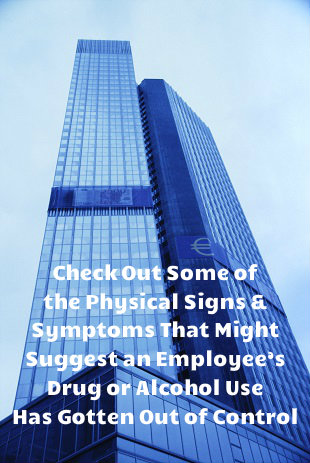 But despite all that is at stake, employers should recognize that addiction is a disease and not simply an irresponsible lifestyle choice, and workers who are suffering from the effects of a substance abuse problem should be treated with compassion and respect as long as they are willing to be open and truthful about what is happening in their lives.
But despite all that is at stake, employers should recognize that addiction is a disease and not simply an irresponsible lifestyle choice, and workers who are suffering from the effects of a substance abuse problem should be treated with compassion and respect as long as they are willing to be open and truthful about what is happening in their lives.
Managers may be able to evaluate the performance of their workers accurately, but it is of course extremely difficult to ascertain why a formerly productive and judicious employee has begun to falter on the job. People often have hidden personal problems or various types of health troubles that can negatively impact their workplace efficiency, either temporarily or permanently, so it is important that bosses and managers tread lightly when they seek to discover the reason a reliable employee has suddenly been giving a less-than-stellar effort or failing to produce results.
Recognizing The Signs
When substance abuse is the problem, there will be indicators that can help clue employers in to what has been going on. It may take a sharp eye to spot them, but they will be present.
Some of the physical signs or symptoms that might suggest an employee’s drug or alcohol use has gotten out of control could include:
- Bloodshot eyes
- Nosebleeds
- Unexplained weight loss and loss of appetite
- Dental problems
- Slovenly or unprofessional appearance
- The presence of unusual odors on or around the employee
- Slurred speech
- Sleeping on the job
- Shaking or tremors
- Seizures
In addition to these tell-tale physical symptoms, the behavior of addicts or alcoholics will likely change in noticeable ways as well. Some behaviors to look out for would include:
- Frequent tardiness
- Mood swings, fits of irrational anger, or sudden bouts of hyperactivity
- Secretiveness
- Sloppiness in carrying out routine assignments
- Refusal to spend time with co-workers during lunch hours or in off-hours (when this activity had been normal before)
- Loss of interest in favorite hobbies or activities
- Actions or choices that lead to injuries or accidents on or off the job, with hazy explanations about what took place and exactly why it happened
Above all else, when the issue is substance abuse, employers and co-workers should learn to trust their instincts. Because substance abuse is so common, most of us have likely encountered it in our families or among friends at some point in our lives, and consequently we are usually capable of recognizing the signs of substance abuse.
The Value Of Preparation
It is always better to anticipate trouble before it arrives so you will be prepared to handle it if and when it comes. This is certainly true when the subject is substance abuse in the workplace, and that is why all employers should have clearly established policies that dictate how addiction and problem drinking or drug abuse will be handled. These policies should be fully disclosed and explained succinctly in written form, in a document or handbook that will be considered required reading for all employees. And just to make sure there is no confusion or uncertainly, employees should be required to a sign a form indicating that they understand the company’s substance abuse policies and will accept any and all consequences of their actions.
But while employers have some leeway in this area, they cannot dictate automatic dismissal if a substance abuse problem is proven to exist. Federal and state disability laws protect the rights of workers with drug or alcohol addictions if they are willing to seek treatment for their dependency, and it is incumbent upon a business owner or manager to speak with a company attorney before instituting substance abuse policies to make sure everything is strictly legal and in synch with existing civil rights statutes.
Employers must be ready, willing, and able to help their workers get the assistance they need should substance abuse become an issue. To make sure they are prepared to do so, businesses should have insurance policies that will cover the costs of drug/alcohol treatment and rehabilitation for workers should they ever be required. Of course managers themselves could someday encounter substance abuse problems, which means that it is really in everyone’s best interests to have adequate health insurance to cover this contingency. And just so they are sure what is out there, employers should fully research drug and alcohol treatment options available in their communities, so that if and when employees need this information it will be available and accessible.
Asking The Right Questions, Getting The Right Answers
When substance abuse is suspected, an employer should approach his or her employee in a way that is open and honest but not confrontational. This is the best way to get answers, and it is the most compassionate path to take when the issue is a disease like addiction. Nevertheless, managers and bosses have a need and a right to discover the truth from their employees about what is happening when workplace performance is suffering, and if an employer cannot get a straightforward response from a worker who is failing to do his job correctly, termination will be a legally permitted option.
But the ultimate goal of any workplace intervention should be to help the person in question get the help he or she needs. With hard work, determination, and a relentlessly positive attitude, addiction can be overcome, and it is in the best interest of every employer to offer whatever assistance they can to men and women whose lives have been momentarily sidetracked by drug or alcohol dependency.
To Read About the Drugs Students are Taking to Boost Grades – Click Here
11 Sep 2013
Signs That A Teen May Be Using Marijuana
Being a parent carries with it many frustrations, but perhaps none more than suspecting your teenager of regularly smoking marijuana. You wonder, but are not sure. You hesitate to ask directly, but some things just don’t add up.
Here Are 10 Signs That A Teen May Be Using Marijuana:
1. Paraphernalia – If you find joint clips, papers, a bong or pipe in your teen’s room or book bag there is good reason to believe they are using marijuana. These are not the signs of experimentation but of regular use; they definitely do not belong to a friend regardless of what your teen may say.
2. Eye Drops – If you find that your teen is using Visine or other eye drops it’s a pretty good sign they’re smoking dope. If there was a normal problem with your teen’s eyes, most likely he/she would have come to you and spoken about it.
3. Air Fresheners, Incense, Breath Fresheners – If your teen develops a sudden concern over the smell in his room, on his clothes or even his breath it’s worth asking what it is he/she is trying to cover up.
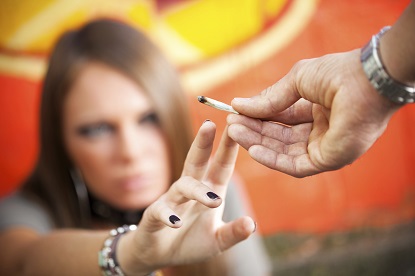
4. Pot Symbols – For some reason, kids who smoke marijuana enjoy advertising their pot use. Posters with pot leaves or stickers/pins with the numbers 420 broadcast to others an above average interest in marijuana.
5. Talking in Code – Most teens are extreme about their privacy, but if you notice that your teen begins using code words when you walk by or regularly leaves the room with his phone when you are around, it could be they are talking about drugs.
6. Finger Burns – If you notice burns on the tips of your teen’s thumb and forefinger it’s probably the result of smoking a joint to the very end. These particular burns are hard to explain in any other way.
7. Isolation or Depression – Again, teens do like to be off on their own, but parents can tell the difference between independence and isolation. If your teen seems depressed and insists on being alone in his/her room rather than taking part in family activities, it deserves investigation.
8. Academic Slippage – A drop in grades is a common sign of drug use. Problems with teachers or school officials and other behavior problems can be a red light signaling deeper issues.
9. Looking for Reasons to Be Out of the House – If your teen suddenly comes up with excuses to leave the house at night you need to find out why. It isn’t likely that your teen suddenly cares about the trash getting out or the dog wanting some exercise.
10. Lack of Motivation – If your teen is no longer interested in things that he/she once enjoyed, or is hard to motivate toward anything, this is a common side effect of pot smoking.
Read More About A Dangerous Drug Trend In Teens
10 Sep 2013
Huffing: A Dangerous Trend For Teens
Alcohol, street drugs, prescription drugs and over-the-counter medications are not the only way kids are getting high and it is imperative that parents become aware. Teens are “huffing” all sorts of common household items in order to get a fast buzz.
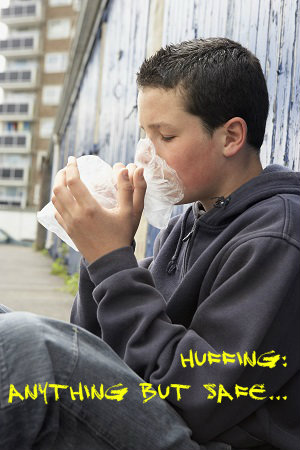 Teens and preteens looking for a cheap high are willing to experiment with breathing in powerful household products like nail polish remover, hair spray, aerosol deodorants, computer cleaner, correction fluid and even aerosol from whip cream canisters. These and other toxic substances are found in nearly every room in American homes. The problem is that many parents, like their young teens, fail to recognize the dangers. A single attempt at huffing has been enough to kill some youth.
Teens and preteens looking for a cheap high are willing to experiment with breathing in powerful household products like nail polish remover, hair spray, aerosol deodorants, computer cleaner, correction fluid and even aerosol from whip cream canisters. These and other toxic substances are found in nearly every room in American homes. The problem is that many parents, like their young teens, fail to recognize the dangers. A single attempt at huffing has been enough to kill some youth.
Huffing is also called dusting or sniffing. Kids trap the toxic chemicals in a small plastic bag which they then hold up to their face before inhaling deeply. This gives them a five to 10 second rush or high. Teens inhale magic markers, household paint, Freon from air-conditioners and refill cartridges for butane lighters.
Dangerously False “Safer” Perception
In recent years there has been a trend among teens away from illegal street drugs towards substances that teens consider more ‘safe.’ Prescription and over-the-counter medications became more widely used for a time until cost and safety measures made them hard to come by. Now inhalants are popular. Not only do these products seem harmless to teens, they are also inexpensive and easy to obtain. Most of the time teens can simply help themselves to something already on the shelf at home. If not, no one will question them when they buy these things at the store.
The truth is that these products are safe when used for their intended purposes and according to their package directions. They are anything but safe when inhaled in order to get high. At best, repeated exposure will injure vital organs (kidneys, liver, lungs, heart and brain). At worst, kids can experience heart attack – referred to as Sudden Sniffing Death Syndrome – or suffocation. Parents who had no idea their child was huffing have gone into their child’s room to find them dead on the floor with a bottle of computer cleaner still clenched in their fingers.
Parents should talk with their teens and even preteens about the dangers of breathing in toxic fumes and chemicals. Kids are huffing even in elementary school, so it isn’t a discussion that needs to wait for high school – it can happen while using these household items or it can be part of a sit-down conversation about drug use in general. Tell your kids that while a product can be safe to use it can still be poisonous. Poison is an important adjective since it communicates just how serious these substances really are.
Parents Can Also Keep Their Eyes Open To Signs Of Huffing, Including:
- Finding plastic bags with a chemical odor to them
- Aerosol products or strong chemical items disappearing entirely or running out quickly
- Teens having the smell of chemicals on their breath
- Symptoms of intoxication, such as red and watery eyes, slurred speech or dazed appearances
- Paint, correction fluid or magic marker stains on their face
- Household products being out of place or perhaps even in the teen’s room.
The best defense is a strong offense, so talk with kids about what their friends might be doing. Talk about why kids might be looking to get high. If your child is huffing regularly, get professional help. Huffing can be addictive in the same way as drugs or alcohol, and kids won’t know which sniff could be their last.
The question of how we should deal with people with the brain disease of addiction isn’t an easy one. The criminalized approach, which would have drug users sitting in jail cells across the country and offers little in the way of medical help, has had its time in the sun. Putting people in jail accomplishes very little, with soaring re-arrest rates for drug crimes testament to the fact that merely punitive action is not enough to deal with the nation’s drug problem. This is the key idea behind drug courts — they aim to help drug users solve problems and get into treatment, rather than sending them straight to jail. Graduates of drug courts, like Melissa Swanger and Kathleen C., often become advocates for the approach, a testament to their ability to turn people’s lives around.
Introduction to Drug Courts
Drug courts are specialized courts for those addicted to drugs or alcohol. Rather than send people with recognized illnesses to jail over and over again, drug courts use a multi-pronged approach with the aim of reducing the chances of both relapse and re-arrest. They do this through interactions with a judge, treatment and rehabilitation services, monitoring, supervision, sanctions and incentives, all offered according to the individual’s requirements as determined by an initial risk and needs assessment. There are consequences for failure, however; if the individual continually relapses or commits crimes, the system effectively reverts to the ordinary, incarceration-based approach.
Melissa and Kathleen’s Stories
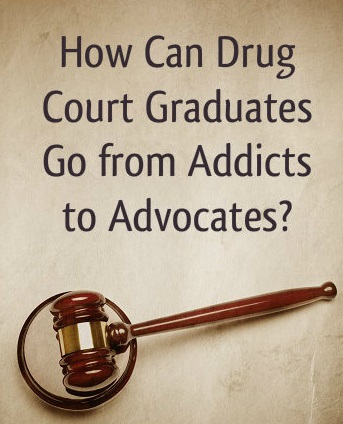 Melissa Swanger had no criminal record until she started using meth. Her goal was to lose weight, but in addition to the 60 to 70 pounds, she lost a lot more, including her home, her car and her children as a result of her addiction. Because there was no indication she was a criminal before she began taking meth, her lawyers pointed her in the direction of the local drug court. Eight years after her entry into drug courts (and seven after her graduation) she is still clean, having made a lasting change in her life, rebuilt relationships and taken responsibility for her actions. She called it “the toughest blessing I’ve ever had,” and went on to comment how the drug court team is “willing to help people instead of saying just throw away the key.” The approach worked wonders for her, and she’s never looked back.
Melissa Swanger had no criminal record until she started using meth. Her goal was to lose weight, but in addition to the 60 to 70 pounds, she lost a lot more, including her home, her car and her children as a result of her addiction. Because there was no indication she was a criminal before she began taking meth, her lawyers pointed her in the direction of the local drug court. Eight years after her entry into drug courts (and seven after her graduation) she is still clean, having made a lasting change in her life, rebuilt relationships and taken responsibility for her actions. She called it “the toughest blessing I’ve ever had,” and went on to comment how the drug court team is “willing to help people instead of saying just throw away the key.” The approach worked wonders for her, and she’s never looked back.
Another story comes from Kathleen C., a mother who found herself committing crimes in order to fund her habit—which graduated from prescription drugs to heroin and meth—so she could use at all hours of the day. She started getting high at work and lost two jobs over the course of her addiction so that eventually she was only working “seasonally” so that employers didn’t catch on to her issues. Eventually, she was arrested for theft and forgery, a moment that became her turning point. After her three-month stretch, she asked to be sent to a drug court. Since then, she’s been clean, graduating in 2012 and managing to repair her relationship with her son. She fought the program at the beginning, but soon realized it was what she needed to overcome her addiction. Since graduating she has gotten engaged and has gained an associate’s degree in applied sciences. She says, “there’s a lot of beautiful things in my life today that I wouldn’t have thought possible.”
Becoming Advocates
After finishing the program, Melissa and Kathleen have become advocates for the drug courts approach. Melissa has become a recovery group leader with a church and tells her own story to inspire others to make a change. The passion the recent graduates show for the program is a testament to its ability to change lives, and the advocates it produces may lead others to make similar decisions to improve their day-to-day existence.
Punishment for Addiction: A Thing of the Past?
The drug court approach seems to be proving that the traditional, punishment-based strategy for dealing with addiction is fundamentally flawed, but not everybody shares the enthusiasm of recent graduates. There are stories of those for whom drug courts did not work, as well as critiques from groups like the Drug Policy Alliance, who argue that drug courts are not cost-effective and leave some people worse off than when they started and that the approach is more punitive than the previous method. This is because they punish users for relapsing, generally with jail time and ejection from the program, with harsher sentences for those who’ve been deemed “failures” in their attempts to get clean. However, whether this is an issue with drug courts as a concept or with how they’re put into practice is unclear.
On the other hand, the National Institute of Justice offers statistics indicating that drug courts are effective at reducing costs to the justice system (an average of $1,400 cheaper per participant) and reducing rates of re-arrest by up to 28 percent over the course of two years. The Drug Policy Alliance alleges that these studies are poorly conducted and often focus on less serious cases, but don’t deny the effectiveness of the approach for some users.
It’s unclear whether drug courts really are as effective as they’re reputed to be, but with the alternative being jail time with no real assistance in getting clean—they must be a step in the right direction. Perhaps a more health-centered approach would be even better, but these types of moves must be made gradually. Maybe, just maybe, the days of punishing people for a health problem are coming to an end.


